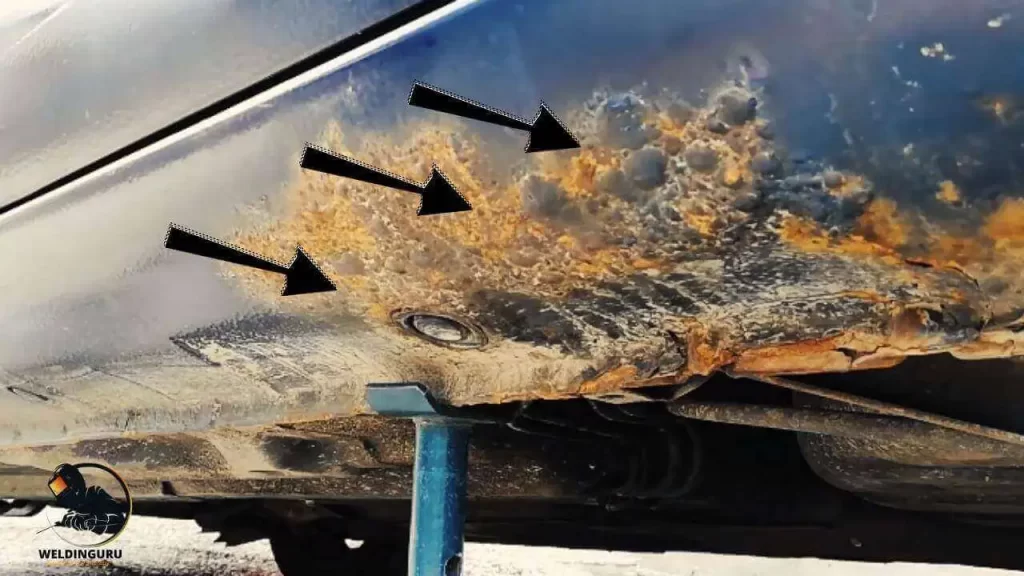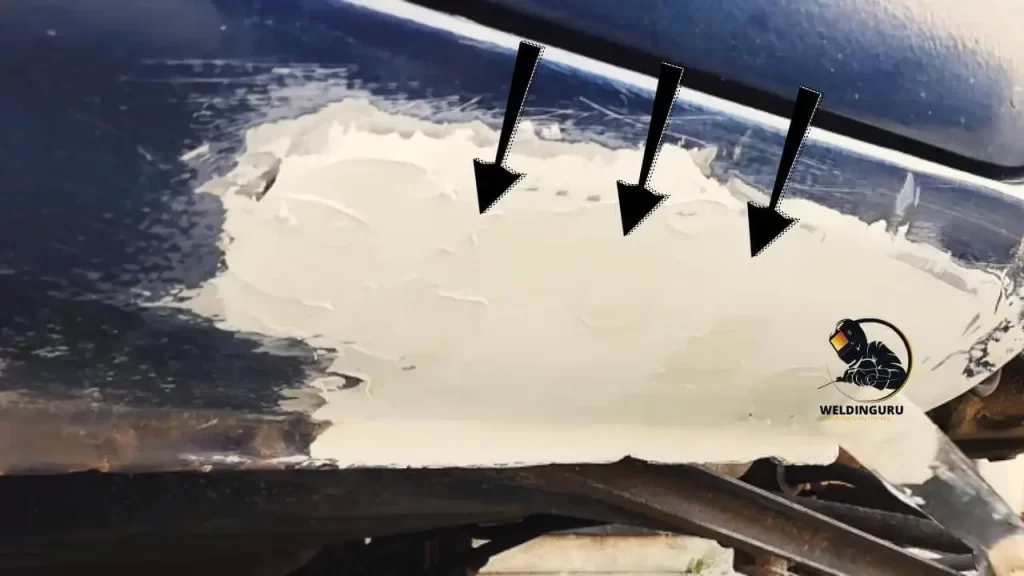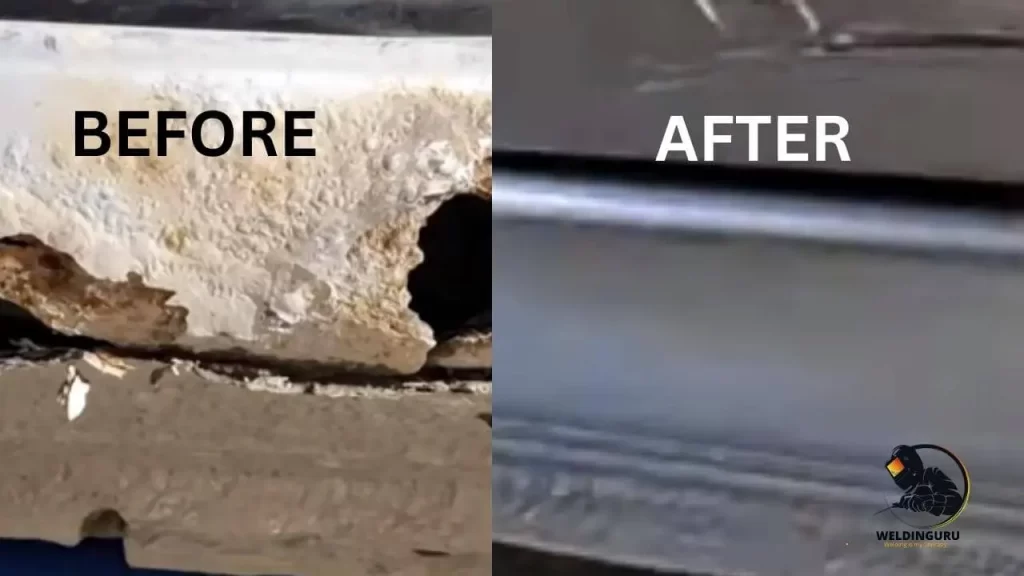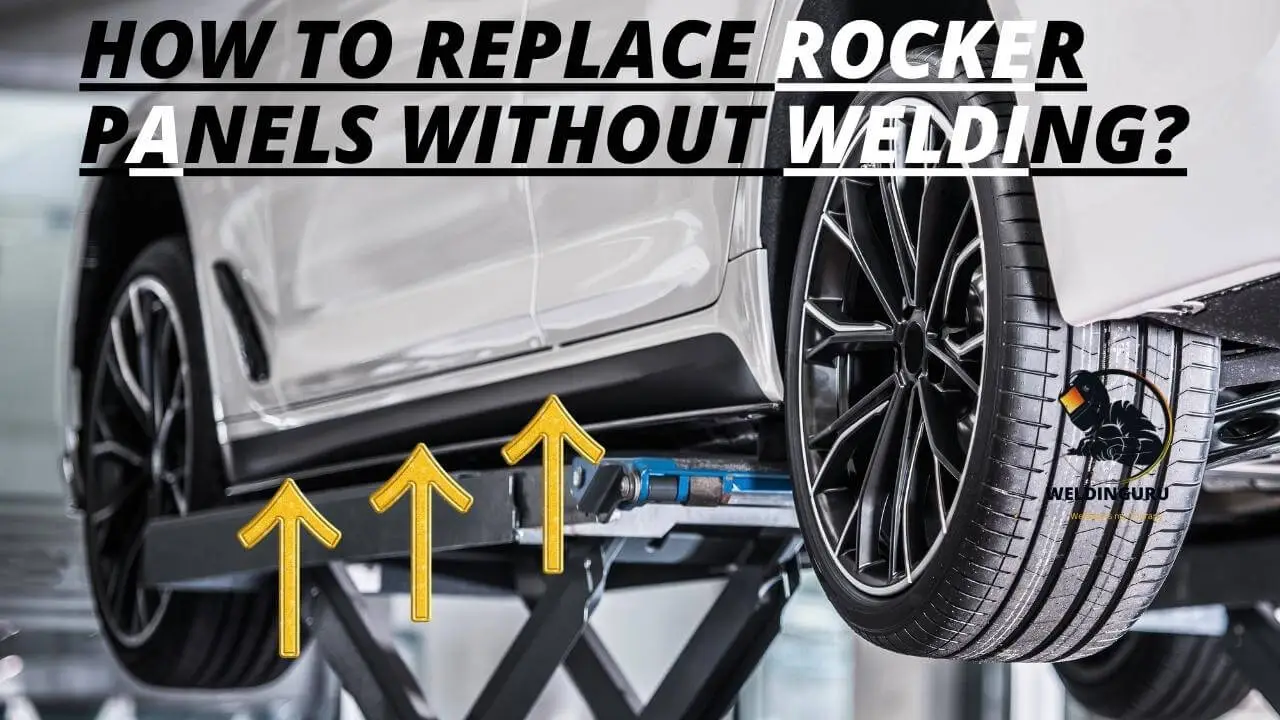Rocker panels have a tendency to rust over time, and repair needs to be done at one point or another. The quickest and simplest way to replace those rocker panels would be welding.
However, that’s not always the best option. In fact, welding can damage your vehicle and cause more harm than good.
Not only do they help fill any gaps where panels meet, but they also make the vehicle look more solid. However, as your car ages and you begin to drive it more, there is a chance that the rocker panels will fall off.
When this happens, you may decide you need to replace the rocker panel of your car without the use of welding. This article is all about how to replace rocker panels without welding.
How To Replace Rocker Panels Without Welding?

Rocker panels need to be changed out as soon as possible before they rust and cause serious problems with your vehicle’s performance. In this, I will show you the steps to replace rocker panels without welding.
- Removing Old Metal
- Detaching Rust
- Rubbing Remaining Rust
- Apply Anti Rust Agent
- Make a Hole in the Panel
- Smoothen the Edges
- Mounting Rocker Panel
Now, I will discuss these with you steps one by one in detail so you can get a better idea:
Step 1: Removing Old Metal
First, you’ll want to detach the old metal from your vehicle’s body. Using a drill and appropriate bit, drill holes at each corner of your rocker panel and then use a crowbar or pry bar to pry up the panel. You may need some help from an assistant if it’s stuck on there tight!
Step 2: Detaching Rust
Once you’ve gotten the old rocker panel off, you’ll want to clean out all of the rust and lingering chips that are in the way of installing your new panels. Use a wire brush attachment on your drill and carefully brush away any rust or debris that might be sticking around on your vehicle’s body frame.
Step 3: Rubbing Remaining Rust
You’ll want to sand away any remaining rust from the area where your new panels will be installed, or at least remove it as much as possible. This will ensure that there aren’t any sharp edges or jagged bits of metal sticking out from where your new panels meet up with the existing ones on your car’s chassis. This could cause them not to fit properly or even catch on to something while driving around town!
Step 4: Apply Anti Rust Agent
After cleaning off all of the rust, it’s time to apply some rust inhibitor spray directly onto the metal surface so that future corrosion doesn’t occur again. This will help protect against further damage caused by oxidation (rusting).
Step 5: Make a Hole in the Panel
This step is crucial in getting your new rocker panel to fit correctly onto the frame of your car. You can use an awl, or any other sharp pointy tool, to mark the holes on the edges of the rocker panels that need to be drilled out.
Once you’ve marked all of those holes, you’ll need to use a drill bit that’s a little bit smaller than the size of the hole you want so that it will create a tight fit when it’s time to put them in place.
Step 6: Smoothen the Edges
After you’ve drilled holes and fitted your new rocker panel, it’s time to make sure that everything is smooth and ready for final assembly. This means that you have to get rid of any sharp edges or burrs that might damage the paint job on your vehicle.
This step is especially important if you’re using a metal grinder like a Dremel tool or a sander to smooth down the metal after drilling holes in it.
You must also remove any debris from inside the hole with a wire brush so that no rust can form during storage or transport.
Step 7: Mounting Rocker Panel
Now that you have everything ready to go, it’s time to mount your new rocker panel on! Start by aligning one end of your new panel into place against your car’s fender well and then slowly work your way around until you have secured it against all four corners (make sure not to over-tighten!).
Also See: Types of Welding Joints
Why Does the Rocker Panel Damage Over Time?
The rocker panel is the section of the vehicle that extends from the front to the rear wheel wells. It is made up of a series of metal panels that are connected by braces, and it protects the car’s body and undercarriage from rocks and other debris that may be thrown up by the tires during driving.
Over time, these panels can become damaged due to exposure to water, dirt, and other elements. They can also get damaged due to dents caused by rocks or other road debris. The result is a rocker panel that needs repairs or replacement.
If your car has been damaged in this way, you should consider getting it fixed as soon as possible before it becomes worse or causes more damage to your vehicle’s undercarriage or body.
Why is there a Need to replace Rocker Panels?
Rocker panels are a part of the body of a vehicle that protects the side of the vehicle from rocks and other debris. Over time, rocker panels become damaged and need to be replaced.
When rocker panels are damaged, they can leak water into your car, causing rust on your vehicle. Not only does this rust damage your car, but it can cause corrosion in your engine and make it more expensive to repair.
If you notice water leaking into your car when it rains or during periods of high humidity, then you should have your rocker panels inspected immediately to prevent further damage.
Which Tools are Required to Replace Rocker Panels?
To replace rocker panels without welding, you will need the following:
- A cutting wheel (for metal) or grinding disc (for plastic) to cut through the old panel.
- A screwdriver is used to remove the screws holding the old panel in place.
- A pry bar to remove the old panel from its clips if necessary.
- A hammer and chisel to remove any remaining clips or fasteners holding the old panel in place.
- A drill with a hole saw attachment to create new holes for attaching your new rocker panels.
Installing Rocker Panels Without Welding

Installing rocker panels without welding is a great option for anyone who wants to get their car in the best shape possible. The process of installing rocker panels without welding involves using a special adhesive that is designed to hold the panels in place.
This method works well because it gives you the ability to get a perfect fit every time you install new rocker panels.
There are several advantages to using this method when installing your rocker panels:
You can easily replace them if they become damaged or worn out over time. The adhesive is much less expensive than welding equipment and materials would be if you were doing it yourself.
It doesn’t take very long at all for someone with experience installing these parts to complete this task because there aren’t many steps involved in this process compared with other methods of installation, such as welding them on, which can take up valuable time that could be spent on other projects instead!
Difference Between Welded & Slip-On Rocker Panels

Welded and slip-on rocker panels are two types of paneling that can be used to cover the area behind an automobile’s rear wheels. Both are designed to protect the vehicle’s frame from damage caused by rocks and other objects thrown up by the tires.
The main difference between welded and slip-on panels is that a welded panel is attached directly to the frame, while a slip-on panel hangs on metal tabs that have been welded onto the frame.
Welded rocker panels are more expensive to install than slip-on panels because they require welding, but they also provide better protection for your vehicle’s undercarriage.
Slip-on rocker panels are easier to install than welded ones because you don’t have to spend time welding them into place; instead, you simply slide them into place over metal tabs that have been welded onto the car’s frame.
The problem with this type of paneling is that it doesn’t provide as much protection for your car’s undercarriage as a welded version does because it doesn’t attach directly to the frame; instead, it hangs on metal tabs that may separate over time or break off entirely if hit hard enough by rocks thrown up by tires.
Factors That Affect the Rocker Panel Replacement Longevity
Factors such as the quality of the replacement panels, and the original materials used in the rocker panel construction, can affect the life expectancy of a slip-on rocker panel replacement.
1. Weather:
One of those factors is the climate in which you live and drive your vehicle. If you live in a region that experiences extreme weather conditions, such as heavy snowfall or high levels of humidity, it’s likely that your slip-on rocker panel replacement will need to be replaced more often than if you lived in a more temperate climate.
2. Material Quality:
Another factor that affects longevity is the type of material used to make your slip-on rocker panels. For example, if you have aluminum rocker panels, they may not hold up as well as plastic or fiberglass versions over time because aluminum tends to rust faster than other materials.
The material should be capable of resisting high temperatures and being resistant to corrosion. It should also be resistant to weather conditions and have good abrasion resistance.
3. Work Quality:
The next factor that affects the slip-on rocker panel replacement longevity is how well it was installed at the factory. Proper installation ensures that there are no gaps between the new part and the vehicle’s body, which can cause rusting over time.
4. Vehicle Use:
The last factor affecting slip-on rocker panel replacement longevity is how often you drive your car or truck. If you use your vehicle every day, then it will need to be repaired more often than if it’s parked in an open field most of the time!
How Does Rocker Panels Replacement Benefits you?
Replacing your damaged rocker panels can help you avoid further damage to your vehicle. Damaged rocker panels are often caused by driving through puddles, which can cause water to enter the trunk and leak onto the electrical components.
This can cause your vehicle to short-circuit and fail. Replacing your rocker panels will also improve safety by eliminating a potential hazard in the event of an accident.
Replacing the damaged rocker panels of your vehicle is a great way to give it a fresh new look and also repair any damage that may have been done to the part.
It’s important to replace damaged rocker panels as soon as possible because they can cause rusting, which can lead to further damage to your vehicle.
Replacing a damaged rocker panel will help you restore the look and functionality of your vehicle. The replacement process is easy, and you can do it yourself with some basic tools. You’ll be able to keep your car looking great for years!
What is the Cost of Replacing the Damaged Rocker Panel?
The cost of replacing a damaged rocker panel without welding varies depending on the size and shape of the panel, as well as its location on the vehicle.
The rocker panel is a section of sheet metal that runs alongside the car’s body. It usually covers up some form of the suspension system and serves as a support for the car’s body or chassis.
When a rocker panel gets damaged, it might be difficult to repair without welding because it can be hard to find replacement panels that fit properly.
The average cost of replacing a damaged rocker panel without welding ranges from $500 to $2000, depending on your location, the size, and shape of your vehicle, as well as where on your vehicle’s frame you need to replace it.
Also See: Types of Welding Positions
Precautions to Consider
When replacing a rocker panel without welding, there are a few precautions to consider.
First, make sure you have enough space for the new panel. Make sure the old panel is removed and that the area is clean.
Second, make sure your replacement part is compatible with your vehicle’s make and model. If it is not, it will not fit correctly and may cause other problems down the line.
Third, get all of your tools ready before starting work on the project. You’ll want all of your tools nearby so they will be easy to access while working on this project.
Tips to Maintain Vehicle’s Rocker Panels
Maintaining your vehicle’s rocker panels is crucial for the health and longevity of your car. Rocker panels are some of the most vulnerable parts of your vehicle, as they are exposed to dirt, rocks, and salt.
If these things aren’t cleaned off regularly, they can damage your car’s paint and rust out your frame. Here are some tips to help you maintain your car’s rocker panels:
- Regularly inspect the rocker panels for damage, rust, and corrosion.
- If you notice any of these problems, get them repaired by a professional as soon as possible.
- Keep your vehicle clean and free from dirt and debris so that it doesn’t get permanently damaged by weather or salt.
- Use high-quality wiper blades that are more durable than generic ones, so they don’t wear out too quickly when they come into regular contact with rocks and other objects on the road surface.
- Keep an eye out for leaks in hoses near the rocker panels so you can address them before they cause serious damage to other parts of your car or truck, like the frame or fuel tank!
Wrapping Up!
This write-up should help you with replacing a damaged or removed rocker panel and provide you with enough information to go about doing it on your own.
Use the tips above to help you as you’re trying to make this undertaking a success. By learning how to replace rocker panels without welding, you won’t have to worry about being stranded until your vehicle is repaired.
It’s faster, cheaper, simpler, and more stylish than replacing the entire rocker panels. And with the right materials and a little know-how, you can definitely follow through with this project on your own.
FAQs:
Can rocker panels be glued on?
Rocker panels can be glued on with special urethane glue. You can apply the glue with a brush or roller, but you’ll want to use the roller for large areas of the rocker panel. Apply the glue and two-sided fiberglass fabric to both sides of the car. Once dry, cut out the rocker panel. Use a hammer to gently tap around the perimeter of each rocker panel on both sides, and then nail it in place with small nails (or screws if possible).
Can I replace my own rocker panel?
Yes, you can replace your own rocker panel. There will be a need for a hammer and a pry bar. This is not a difficult project, but it does require some work. You will need to remove the trim under the door molding, then remove the trim along the bottom side of each door. Next, remove the door handles and lock cylinder before removing the side trim pieces. Remove all of these parts before removing your damaged rocker panel or replacing it with a new one.
Is it worth replacing rusted rocker panels?
Rockers represent a significant portion of your vehicle’s chassis. They protect the body and frame from road hazards like rocks, toolboxes, and other things. Rocker panels are usually placed under the doors to provide protection and prevent unwanted impacts from happening. Therefore, it is crucial that you consider replacement before rust damages your car’s body, as well as its functional integrity.
